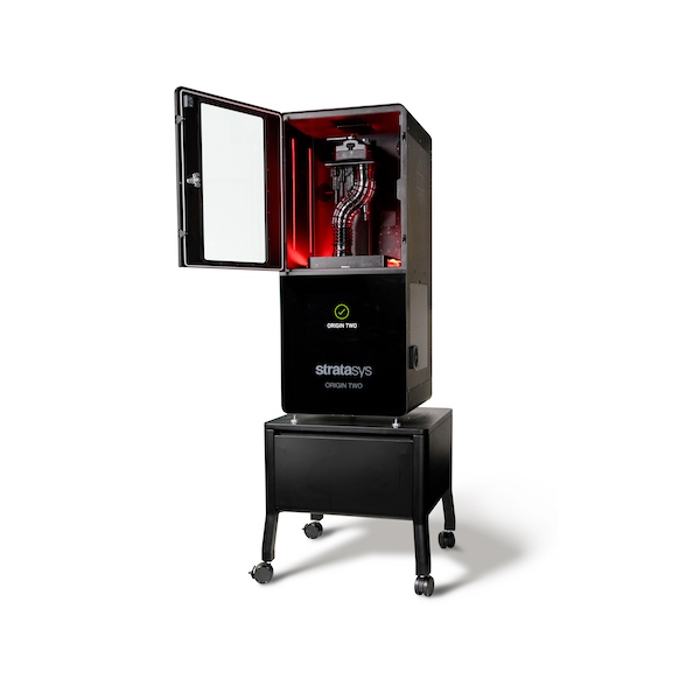A Sustainable Blueprint for Manufacturing: Production at Scale
Nov 02, 2024
A Sustainable Blueprint for Manufacturing: Production at Scale
Picture a world where manufacturing and sustainability go hand in hand. It's a world where businesses focus on meeting production targets, doing so in a way that boosts efficiency, effectiveness, and impact for a better future for people and our planet. In this world, digital files replace physical inventory, and the ability to produce parts on-site in real time significantly reduces reliance on global supply chains and transportation. The good news is this world actually exists today, thanks to the innovative power of additive manufacturing (AM), also known as 3D printing.
AM isn't just a technology; it's a concept that represents a paradigm shift towards transformative and profitable environmental stewardship. It supports the decarbonization of operations that has become fundamental in long-term business growth; it empowers manufacturers to promote responsible consumption in production while delivering economic viability and innovation.
Join us on a journey where digital precision replaces physical excess, and what we call “Mindful Manufacturing” defines our path to a brighter future. Our strategy and approach emphasizes thoughtful production-at-scale that aids organizations in improving performance, achieving sustainability goals, and maintaining long-term profitable growth. Our evidence-based approach enables manufacturers to demonstrate the sustainability benefits of AM through research, reporting, and data collection, introducing ongoing improvement.
Related:Stratasys and AM Craft Collaborate on 3DP Parts for Aviation
Here are some ways AM can lead to sustainable manufacturing.
Manufacture closer to point of consumption
Have you ever considered the carbon footprint of shipping products halfway around the globe? By producing goods closer to where parts are needed, AM cuts down on those long-haul journeys and their massive environmental footprint. The decentralized nature of AM enables localized production, producing goods where they are implements.
Produce complex designs using fewer resources
Adopting AM is about advanced manufacturing. With unique capabilities, engineers and designers can create more-intricate geometries that lightweight and consolidate structures with innovative patterns that optimize performance and minimize waste. This translates to fewer resources consumed in parts production and fewer overall emissions, highlighting the tangible benefits of the technology.
Unlike traditional manufacturing, AM can drastically cut down on waste and materials costs by up to 90%, producing items on demand with no molds or excess waste. According to a recent AMGTA Lifecycle Report, a luxury fashion footwear brand required 16,000 units of a logo applique to be printed. When compared with traditional injection molding, their new AM-enabled process streamlined efforts, with the promise to deliver savings of approximately 49.9% of stock material, reducing transportation needs, and using 64% less electricity on average compared to traditional methods. Decarbonizing operations through AM requires time and resources for proper measurement, reporting, and continuous improvement; it’s worth the effort as it offers efficiencies that traditional manufacturing simply can’t.
Related:Stratasys Introduces High-Precision Printing for Short Production Runs

The Origin Two 3D printer from Stratasys can be used to print parts on site. STRATASYS
Change industries and their supply chains
AM-enabled production has the power to transform industries, introducing a wave of innovative, sustainable concepts. For example, automakers and their suppliers can produce lighter, stronger components with AM that contribute to improved fuel efficiency and reduced emissions. In aerospace, where precision and performance are critical, AM enables the production of certified parts printed on-demand, without compromising on quality. The flexibility of 3D printing allows manufacturers to meet specific consumer demands, reducing overstock and aligning with circular economy principles focused on reuse, redesign, repurpose, and recycling.
Related:Stratasys Debuts Integrated 3D-Printing System for Dentures
As businesses look for more agility and resilience, in the face of global geopolitical, economic and healthcare threats, AM offers new capabilities. With AM-optimized operations, companies can streamline part production and mitigate supply chain challenges in our evolving global economy.
AM is about changing how we manufacture goods by transforming our approach to production through a shared lens of sustainability, efficiency, and economic viability. Our customers are the key to unlocking the value of AM, use-case by use-case. This innovative approach is the blueprint to drive profound positive change in the manufacturing landscape. Let's embrace this future, where more mindful manufacturing isn't just an ideal but a reality shaping our world.